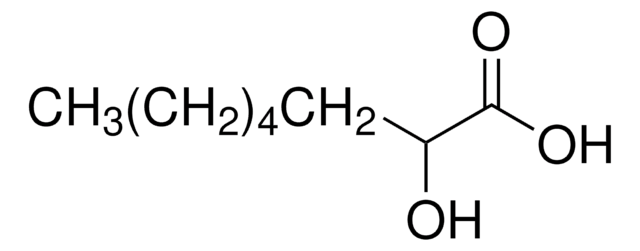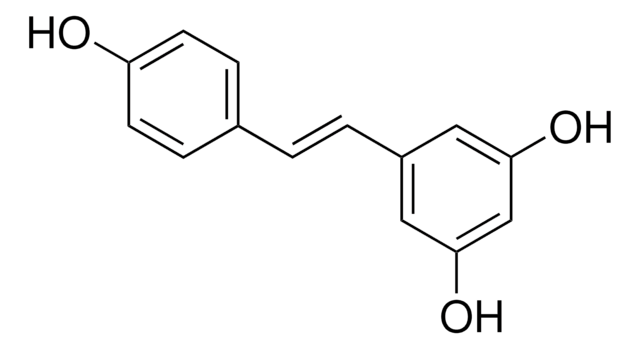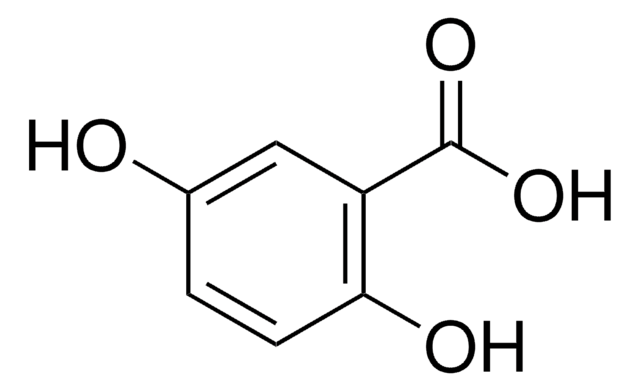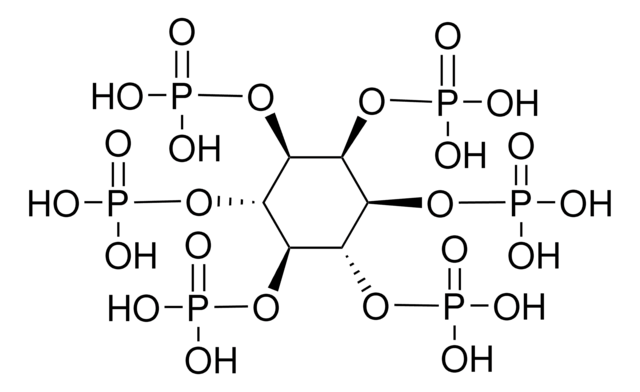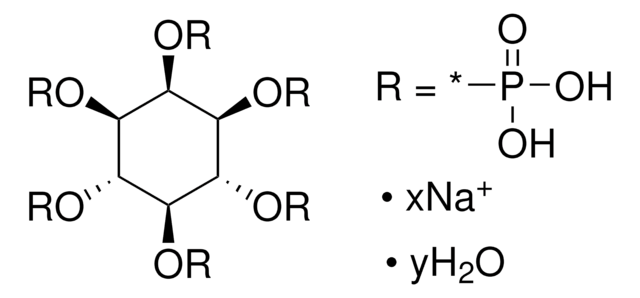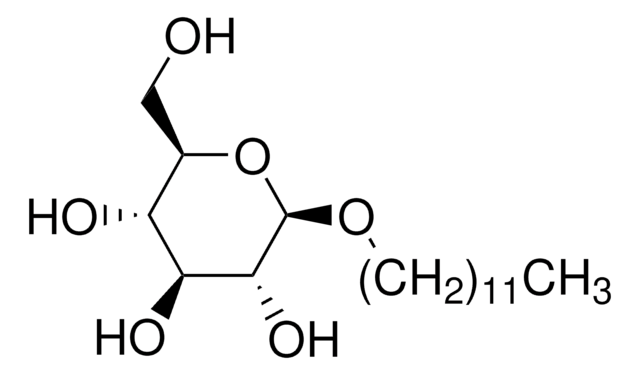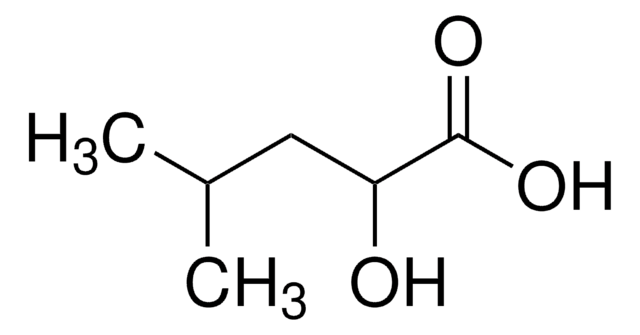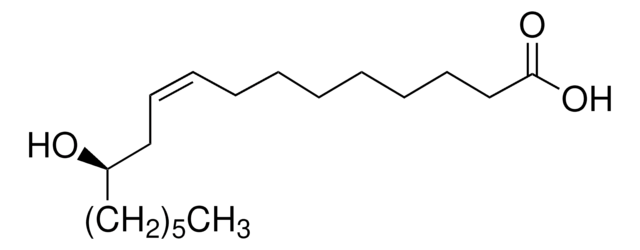H6521
2-Hydroxydodecanoic acid
≥98% (capillary GC)
Sinonimo/i:
α-Hydroxylauric acid, 2-Hydroxylauric acid, DL-α-Hydroxylauric acid
Autenticatiper visualizzare i prezzi riservati alla tua organizzazione & contrattuali
About This Item
Formula condensata:
CH3(CH2)9CH(OH)COOH
Numero CAS:
Peso molecolare:
216.32
Numero CE:
Numero MDL:
Codice UNSPSC:
12352211
ID PubChem:
NACRES:
NA.25
Prodotti consigliati
Livello qualitativo
Saggio
≥98% (capillary GC)
Tipo di lipide
saturated FAs
Temperatura di conservazione
2-8°C
Stringa SMILE
CCCCCCCCCCC(O)C(O)=O
InChI
1S/C12H24O3/c1-2-3-4-5-6-7-8-9-10-11(13)12(14)15/h11,13H,2-10H2,1H3,(H,14,15)
YDZIJQXINJLRLL-UHFFFAOYSA-N
Cerchi prodotti simili? Visita Guida al confronto tra prodotti
Applicazioni
DL-α-Hydroxylauric acid is a racemic mixture of D and L-α-hydroxylauric acid. DL-α-Hydroxylauric acid may be used to evaluate chiral separation methods for medium chain saturated hydroxyl fatty acids.
Codice della classe di stoccaggio
11 - Combustible Solids
Classe di pericolosità dell'acqua (WGK)
WGK 3
Punto d’infiammabilità (°F)
Not applicable
Punto d’infiammabilità (°C)
Not applicable
Dispositivi di protezione individuale
Eyeshields, Gloves, type N95 (US)
Scegli una delle versioni più recenti:
Possiedi già questo prodotto?
I documenti relativi ai prodotti acquistati recentemente sono disponibili nell’Archivio dei documenti.
I clienti hanno visto anche
Vincent Sauveplane et al.
The FEBS journal, 276(3), 719-735 (2009-01-06)
An approach based on an in silico analysis predicted that CYP77A4, a cytochrome P450 that so far has no identified function, might be a fatty acid-metabolizing enzyme. CYP77A4 was heterologously expressed in a Saccharomyces cerevisiae strain (WAT11) engineered for cytochrome
Wiboonluk Pungrasmi et al.
The Journal of general and applied microbiology, 54(1), 61-69 (2008-03-08)
A bacterial strain, WL(T), which was isolated from an activated sludge, was able to degrade alkylphenols. 16S rDNA sequence analysis indicated that strain WL(T) belonged to the genus Pseudomonas (sensu stricto) and formed a monophyletic clade with the type strain
Gerald Nagahashi et al.
Fungal biology, 115(4-5), 351-358 (2011-05-03)
Two hydroxy fatty acids, tentatively identified previously in carrot root exudates, were tested for their effects on hyphal growth of the arbuscular mycorrhizal (AM) fungus, Gigaspora gigantea (Nicol. and Gerd.) Gerdemann and Trappe. Best results were achieved with a long-term bioassay
Myeongjin Yi et al.
Toxicology and applied pharmacology, 330, 100-106 (2017-07-22)
Because macrophages respond to a variety of pathological and pharmacological reagents, understanding the role of P450s in macrophages is important for therapeutic intervention. There has been a lack of research on CYP4 in macrophages, but fatty acid accumulation and lipid
Hazel M Girvan et al.
Journal of inorganic biochemistry, 188, 18-28 (2018-08-18)
The CYP152 family of cytochrome P450 enzymes (P450s or CYPs) are bacterial peroxygenases that use hydrogen peroxide to drive hydroxylation and decarboxylation of fatty acid substrates. We have expressed and purified a novel CYP152 family member - CYP152K6 from the
Il team dei nostri ricercatori vanta grande esperienza in tutte le aree della ricerca quali Life Science, scienza dei materiali, sintesi chimica, cromatografia, discipline analitiche, ecc..
Contatta l'Assistenza Tecnica.